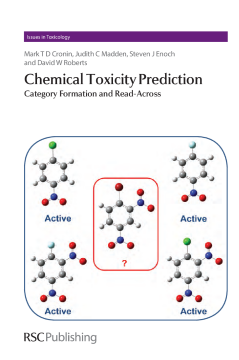
Additional Information
Book Details
Abstract
The aim of this book is to provide the scientific background to using the formation of chemical categories, or groups, of molecules to allow for read-across i.e. the prediction of toxicity from chemical structure. It covers the scientific basis for this approach to toxicity prediction including the methods to group compounds (structural analogues and / or similarity, mechanism of action) and the tools to achieve this. The approaches to perform read-across within a chemical category are also described.
Chemical Toxicity Prediction provides concise practical guidance for those wishing to apply these methods (in risk / hazard assessment) and will be illustrated with case studies. This is the first book that addresses the concept of category formation and read-across for toxicity prediction specifically. This topic has really taken off in the past few years due to concerns over dealing with the REACH legislation and also due to the availability of the OECD (Q)SAR Toolbox. Much (lengthy and complex) guidance is available on category formation e.g. from the OECD and, to a lesser extent, the European Chemicals Agency but there is no one single source of information that covers all techniques in a concise user-friendly format.
Mark Cronin is a Professor of Predictive Toxicology at Liverpool John Moores University, and has over 20 years of experience in the development of in silico approaches to predict toxicity including the use of QSAR, and read-across. He has published three books and over 160 papers in these areas. Judith Madden is a reader in Molecular Design at Liverpool John Moores University and has over 15 years experience in the application of QSAR and in silico techniques to predict the ADMET properties of xenobiotics. She has published one book and over 40 papers in these areas. Steven Enoch is a Post-Doctoral Research Fellow in Predictive Toxicology at Liverpool John Moores University. He is internationally recognised for his research in mechanistic categorisation for toxicology.
